-
 bitcoin
bitcoin $112715.707551 USD
-1.71% -
 ethereum
ethereum $4101.475385 USD
-3.01% -
 tether
tether $1.000644 USD
-0.02% -
 bnb
bnb $1207.619465 USD
-6.77% -
 xrp
xrp $2.501451 USD
-3.98% -
 solana
solana $202.947124 USD
-3.32% -
 usd-coin
usd-coin $1.000295 USD
0.04% -
 dogecoin
dogecoin $0.203884 USD
-4.47% -
 tron
tron $0.317154 USD
-1.72% -
 cardano
cardano $0.695009 USD
-4.43% -
 hyperliquid
hyperliquid $38.853961 USD
-8.23% -
 chainlink
chainlink $18.988674 USD
-4.64% -
 ethena-usde
ethena-usde $1.000233 USD
-0.03% -
 stellar
stellar $0.337050 USD
-3.63% -
 bitcoin-cash
bitcoin-cash $536.861728 USD
-1.28%
Can I adjust the leverage of SOL contracts after opening a position?
Traders can adjust leverage on open SOL positions to manage risk and margin, but must stay vigilant of liquidation prices and exchange-specific rules.
Oct 09, 2025 at 07:00 pm
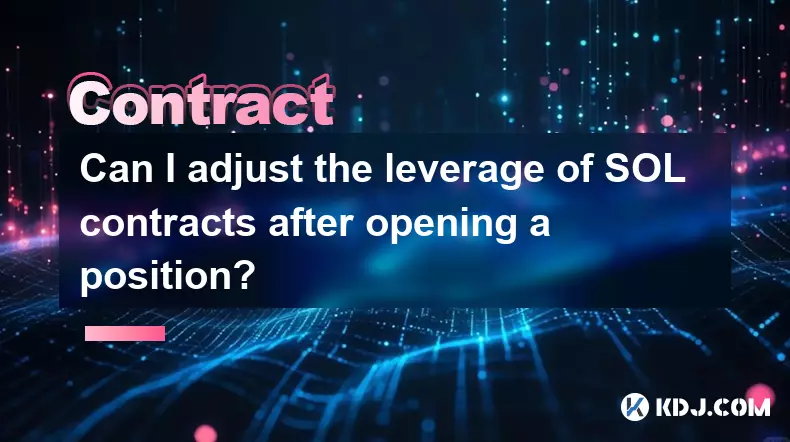
Understanding Leverage in SOL Contracts
1. Leverage allows traders to control a larger position using a smaller amount of capital. In the context of Solana (SOL) futures or perpetual contracts, leverage amplifies both potential gains and losses. Most derivatives exchanges offer leverage options ranging from 2x to as high as 100x depending on the platform and market conditions.
2. When opening a leveraged position in SOL, the chosen leverage multiplier determines the margin requirement and liquidation price. A higher leverage increases exposure but reduces the buffer against adverse price movements. Traders must be aware that excessive leverage can lead to rapid liquidations during volatile periods.
3. The initial leverage is set at the time of position entry. This value defines how much borrowed funds are used relative to the trader’s own capital. While this setting remains fixed for the lifetime of the position on some platforms, others provide dynamic adjustment features under specific conditions.
Adjusting Leverage Post-Position Opening
1. Many leading cryptocurrency derivatives exchanges allow users to modify the leverage on an open SOL contract position. This functionality is typically accessed through the position management interface after the trade has been executed.
2. Adjusting leverage does not change the size of the position but alters the margin allocation. Increasing leverage frees up margin for other trades while decreasing it adds more collateral, thereby lowering the risk of liquidation.
3. Not all exchanges support real-time leverage modification. Some require the position to meet minimum margin thresholds before adjustments can be made. Others may restrict changes if the position is close to its liquidation price.
4. When leverage is adjusted, the liquidation price recalculates automatically. Reducing leverage pushes the liquidation price further away from the current market price, offering greater safety. Conversely, increasing leverage brings the liquidation point closer, heightening risk.
Risks and Considerations in Leverage Management
1. Frequent changes to leverage can expose traders to unintended risks, especially during fast-moving markets. A sudden spike in volatility after increasing leverage could trigger a liquidation before corrective action is possible.
2. Margin balance plays a critical role in determining whether a leverage adjustment is permitted. If the available balance is insufficient to support a lower leverage setting, the system may reject the request until additional funds are deposited.
3. Certain trading strategies rely on maintaining consistent leverage throughout a position’s lifecycle. For example, systematic traders using algorithmic models may avoid mid-trade adjustments to preserve strategy integrity.
4. Traders should always monitor their position health after modifying leverage, as even small shifts in price can have outsized impacts when operating at high multiples.
Exchange-Specific Features and Limitations
1. Platforms like Bybit, OKX, and KuCoin offer built-in tools to adjust leverage on active SOL positions. These interfaces often include live previews of how the new leverage affects liquidation price and margin usage.
2. Some exchanges impose limits on how frequently leverage can be changed within a given timeframe. This prevents abuse and ensures system stability during peak trading hours.
3. Isolated margin mode usually allows more flexible leverage adjustments compared to cross-margin mode, where changes might affect multiple positions sharing the same margin pool.
4. It is essential to review the specific rules of the exchange being used, as policies around leverage modification vary significantly between platforms.
Frequently Asked Questions
Can changing leverage affect my entry price?No, adjusting leverage does not alter the original entry price of the position. It only impacts the margin allocation and liquidation threshold.
Does leverage adjustment incur fees?Most exchanges do not charge fees for modifying leverage. However, any resulting changes in funding payments due to increased position value should be considered.
What happens if I try to reduce leverage but don’t have enough balance?The system will deny the request. To lower leverage, sufficient available balance must cover the increased margin requirement; otherwise, a top-up is necessary.
Is it possible to automate leverage adjustments based on market conditions?Currently, no major exchange supports automated leverage scaling. All adjustments must be initiated manually by the user through the trading interface.
Disclaimer:info@kdj.com
The information provided is not trading advice. kdj.com does not assume any responsibility for any investments made based on the information provided in this article. Cryptocurrencies are highly volatile and it is highly recommended that you invest with caution after thorough research!
If you believe that the content used on this website infringes your copyright, please contact us immediately (info@kdj.com) and we will delete it promptly.
- Dogecoin vs. Remittix: A Tale of Two Cryptos and the Price Outlook
- 2025-10-15 14:25:17
- ZORA, BTC, and Zcash: Riding the Crypto Rollercoaster with Robinhood and Whale Watching
- 2025-10-15 14:25:17
- Beatrix Potter 50p Coin Sale: A Nostalgic Hunt for Treasure
- 2025-10-15 14:30:00
- Coinbase's Bet on CoinDCX: A $2.45 Billion Valuation in the Indian Crypto Landscape
- 2025-10-15 14:30:00
- Enso, Binance, and Airdrops: Navigating the Web3 Interoperability Landscape
- 2025-10-15 14:30:00
- Acurast's Token Generation Event and Mainnet Launch: A New Dawn for Decentralized Compute
- 2025-10-15 14:30:14
Related knowledge

How to calculate the ROI for Ethereum contracts?
Oct 09,2025 at 04:36pm
Understanding Ethereum Contract ROI Basics1. Return on Investment (ROI) for Ethereum contracts begins with tracking the initial capital deployed into ...

How to find arbitrage opportunities between different Bitcoin contracts?
Oct 14,2025 at 11:18pm
Finding Arbitrage Opportunities in Bitcoin Futures Markets1. Monitor price discrepancies across exchanges offering Bitcoin futures contracts. Differen...
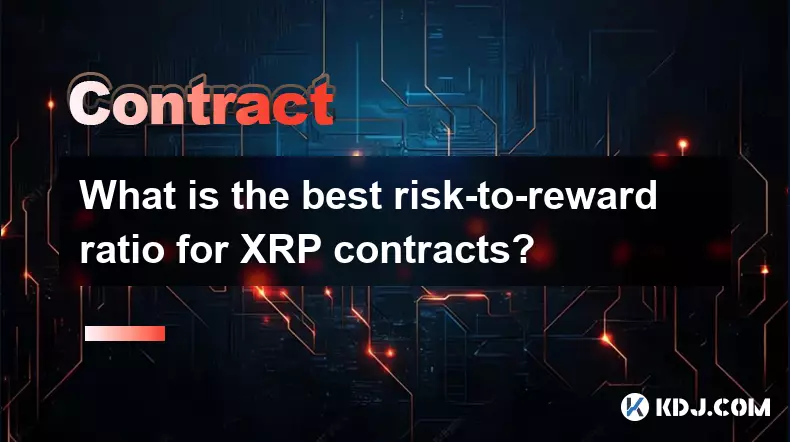
What is the best risk-to-reward ratio for XRP contracts?
Oct 11,2025 at 04:18am
Understanding Risk-to-Reward in XRP Futures Trading1. The risk-to-reward ratio is a fundamental metric used by traders to evaluate the potential profi...
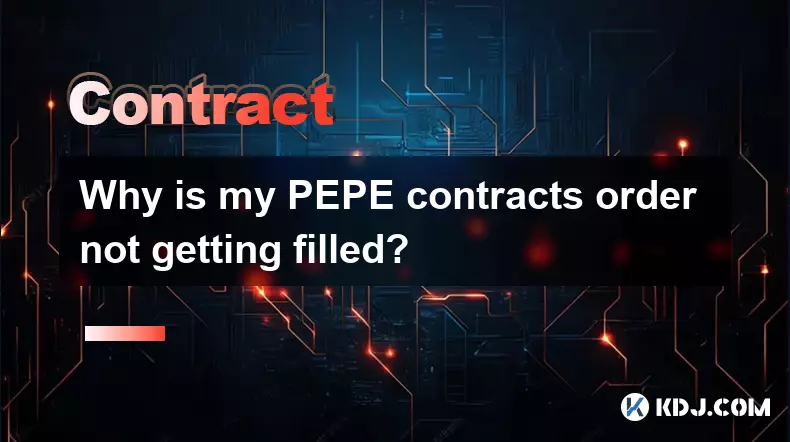
Why is my PEPE contracts order not getting filled?
Oct 12,2025 at 06:01pm
Understanding Liquidity Issues in PEPE Contracts1. Low liquidity is one of the primary reasons a PEPE contract order may not get filled. Many meme-bas...
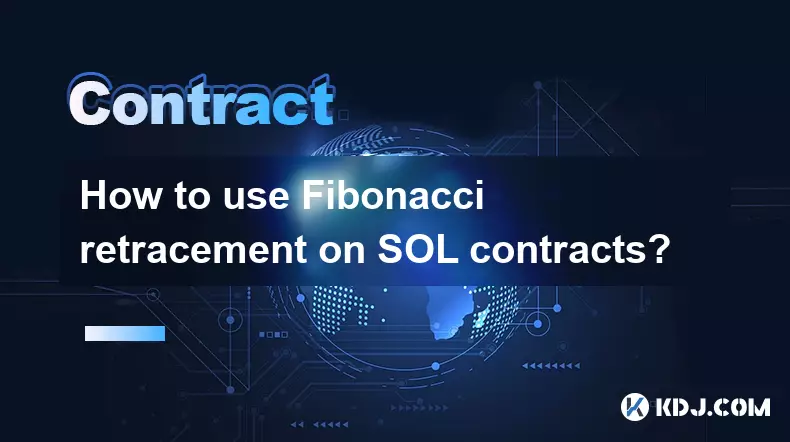
How to use Fibonacci retracement on SOL contracts?
Oct 14,2025 at 02:36pm
Fibonacci Retracement Basics in SOL Trading1. Fibonacci retracement is a technical analysis tool used to identify potential support and resistance lev...

Is it better to trade Dogecoin contracts or spot?
Oct 12,2025 at 04:54pm
Understanding Dogecoin Spot Trading Mechanics1. Spot trading involves the direct purchase and ownership of Dogecoin at the current market price. Trade...

How to calculate the ROI for Ethereum contracts?
Oct 09,2025 at 04:36pm
Understanding Ethereum Contract ROI Basics1. Return on Investment (ROI) for Ethereum contracts begins with tracking the initial capital deployed into ...

How to find arbitrage opportunities between different Bitcoin contracts?
Oct 14,2025 at 11:18pm
Finding Arbitrage Opportunities in Bitcoin Futures Markets1. Monitor price discrepancies across exchanges offering Bitcoin futures contracts. Differen...

What is the best risk-to-reward ratio for XRP contracts?
Oct 11,2025 at 04:18am
Understanding Risk-to-Reward in XRP Futures Trading1. The risk-to-reward ratio is a fundamental metric used by traders to evaluate the potential profi...

Why is my PEPE contracts order not getting filled?
Oct 12,2025 at 06:01pm
Understanding Liquidity Issues in PEPE Contracts1. Low liquidity is one of the primary reasons a PEPE contract order may not get filled. Many meme-bas...

How to use Fibonacci retracement on SOL contracts?
Oct 14,2025 at 02:36pm
Fibonacci Retracement Basics in SOL Trading1. Fibonacci retracement is a technical analysis tool used to identify potential support and resistance lev...

Is it better to trade Dogecoin contracts or spot?
Oct 12,2025 at 04:54pm
Understanding Dogecoin Spot Trading Mechanics1. Spot trading involves the direct purchase and ownership of Dogecoin at the current market price. Trade...
See all articles





















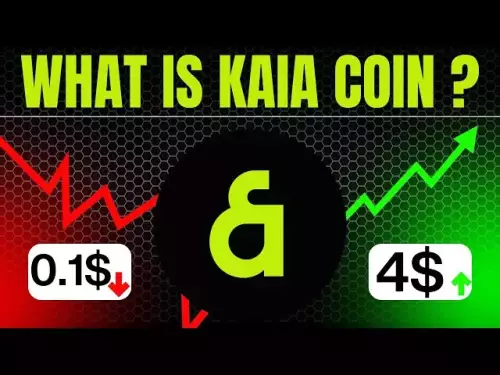




![Staking ATH: How To Stake $ATH in October 2025 with 523% APY — [Step-By-Step Guide] Staking ATH: How To Stake $ATH in October 2025 with 523% APY — [Step-By-Step Guide]](/uploads/2025/10/15/cryptocurrencies-news/videos/staking-ath-stake-ath-october-apy-stepstep-guide/68eef94d80903_image_500_375.webp)















































